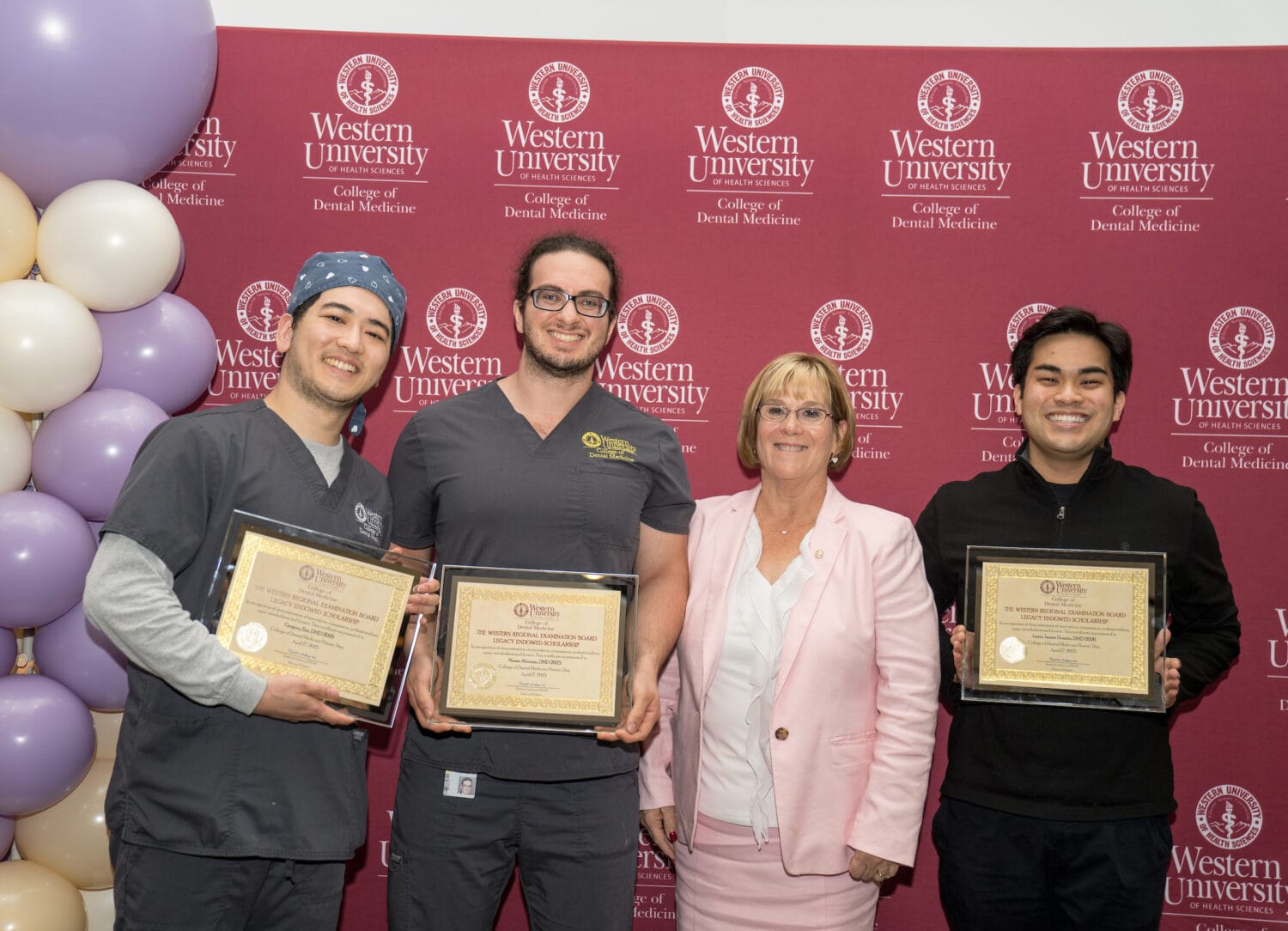AACOM releases new osteopathic medical college enrollment data, COMP remains steady
Enrollment figures for Western University of Health Sciences’ College of Osteopathic Medicine of the Pacific (COMP) remain steady, while the American Association of Colleges of Osteopathic Medicine (AACOM) reports osteopathic medicine (DO) student enrollment climbs.
COMP and its sister campus COMP-Northwest in Lebanon, Oregon, have 346 students enrolled in the Class of 2019. The Class of 2018 has identical enrollment numbers, according to WesternU’s Office of the Registrar.
Fall 2015 new (first-year) student enrollment at the nation’s colleges of osteopathic medicine (COMs) increased by 3.5 percent from fall 2014 first-year student enrollment, according to data released today by the AACOM. This rise in first-year matriculation brings the preliminary fall 2015 total student enrollment at U.S. COMs to 26,121—a 6.3 percent increase from the official total enrollment in fall 2014.
Much of this growth is attributed to the creation of two newly accredited teaching locations—the Edward Via College of Osteopathic Medicine-Auburn (VCOM-Auburn) and the Ohio University Heritage College of Osteopathic Medicine (OU-HCOM) Cleveland campus—which enrolled inaugural classes in fall 2015.
“As a distinct form of medical practice that continues to attract an increasing number of students throughout the United States, osteopathic medicine is leading the way in preparing the physician of the future,” said Stephen C. Shannon, DO, MPH, President and CEO of AACOM. “Through innovative training models that focus on developing quality, patient-centered care, osteopathic medical schools are equipping future DOs with the competencies they need to meet the rapidly changing demands of our health care system.”
Among the key findings from AACOM’s preliminary Fall 2015 enrollment report:
- The total number of paid applicants to one or more COMs climbed from 18,177 in 2014 to 20,670 this year—an uptick of 13.7 percent.
- The preliminary number of DO students graduating from medical colleges between July 1, 2014 and June 30, 2015, rose from 4,997 to 5,314—an increase of 6.3 percent. COMP and COMP-Northwest matriculated 333 students in 2015.
- A total of 7,025 students began their osteopathic medical education (OME) at one of the 31 DO-granting medical schools that educate students at 44 U.S. locations in 29 states.
Recent data also suggests that a substantial number of DO graduates over the past three years either plan to pursue primary care, or plan to practice in areas impacted by a shortage of health professionals. According to the AACOM Annual Survey of Colleges of Osteopathic Medicine, nearly half of DO graduates in 2012 and 2013 placed in GME (residency) programs in the primary care specialties of family medicine, general internal medicine, and general pediatrics.
The majority of COMP students graduating in 2015 chose to train in primary care fields, where there is the greatest shortage of physicians.
At COMP, 62 percent of the students who applied for Graduate Medical Education (GME) went into primary care, which includes family medicine, internal medicine, pediatrics, and OB-GYN. At COMP-Northwest, 71 percent of the students who applied for GME went into primary care, according to COMP Dean Paula Crone, DO.
Data in this report was provided by the nation’s osteopathic medical schools as of September 24, 2015, and represents preliminary findings. Official findings are due January 2016. All data included may be freely redistributed with proper attribution to AACOM.
About AACOM
The American Association of Colleges of Osteopathic Medicine (AACOM) represents the 31 accredited colleges of osteopathic medicine in the United States. These colleges are accredited to deliver instruction at 44 teaching locations in 29 states. In the 2015-16 academic year these colleges are educating over 26,100 future physicians—more than 20 percent of all U.S. medical students. Six of the colleges are public and 25 are private institutions.
AACOM was founded in 1898 to support and assist the nation’s osteopathic medical schools, and to serve as a unifying voice for osteopathic medical education. AACOM provides leadership for the osteopathic medical education community by promoting excellence in medical education, research and service, and by fostering innovation and quality across the continuum of osteopathic medical education to improve the health of the American public.
AACOM Senior Media Specialist Paul DeMiglio contributed to this story.



